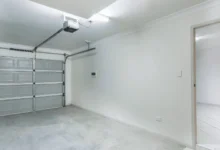Get Stucco Cracks Repair on House
A durable and low-maintenance siding option, stucco contains Portland cement, sand, lime, and water. Stucco’s vulnerability to cracking is the same as it is with anything made from Portland cement. In addition to incorrect mix proportions, insufficient mixing, poor workmanship, earthquake movements, and seasonal changes, cracks in stucco are also caused by the house settling process and shrinkage-induced stresses, both of which tend to occur during the drying process.
Let’s now learn how serious a stucco crack can be and how to determine if you need a stucco repair in Newmarket visit here.
Crack inspection
As we begin to address the stucco cracks, we often ask ourselves, are cracks in new stucco normal? Should I repair it if my exterior stucco is damaged? Let’s elaborate on these questions.
When stress is relieved in cement plaster stucco, a crack forms. When investigating a crack in stucco, it is tricky to find the source of the stress.
It is easier to isolate the source of stress if you place it into one of two categories: stress that is contained within the plaster membrane and stress from outside the plaster membrane. While this may seem overly simplistic, it can be helpful when faced with a daunting task.
Unlike plaster membranes, cement stucco is a relatively thin, fragile shell over a frame, which can be damaged by stresses that overcome the plaster membrane strength. It would be a good option to contact a licensed stucco repair contractor in Simcoe County to replace the stucco if it is coming off your home.
Stress-related to shrinkage
Stress resulting from shrinkage within the plaster itself is considered to be the first source. Portland cement undergoes shrinkage when it dries.
It is crucial to minimize cracks in both categories of stress by controlling & minimizing shrinkage so that there is a minimal requirement to repair stucco. Here are some mistakes that cause shrinkage stress:
The mix ratio is poor – Sand shrinks whereas cement stays the same size. Plasterers may prefer cement-rich mixes since they work better. On the other hand, they shrink more. To minimize shrinkage, sand volumes must be kept high.
Curing is not occurring – The cement needs to dry and harden. The cement plaster will shrink if excessive or fast evaporation of water occurs. The effect is particularly evident the first day or two after application and in windy weather. The same can also happen when cement stucco is applied to absorbent surfaces like masonry.
Inferior sand quality – Clay, excessive fine content in sand, and dirt can all cause material shrinkage (shrinkage stress). Whenever there is a high level of moisture, clay will shrink more. Gradation (varieties of sizes) and angularity in the shape of the sand are essential characteristics.
Overly thick – A full thickness of Portland cement is also likely to shrink more after the first pass, resulting in shrinkage cracks. Some proprietary products include additives that can be used successfully in thicker applications of stucco, resulting in minimal shrinkage.
Also read: Should I Repair my Chimney or Rebuild?
External sources
Your exterior stucco is damaged due to stress from outside sources. External stresses include structural loads, lateral force racking, thermal changes, wind, and lumber shrinkage.
Cracks caused by stress relief are usually longer and extend from one architectural break to another. Determining the source of the outside stress is the most challenging.
Cracks in stucco: When to be concerned and how to get stucco cracks repaired
There are different types of stucco cracking that indicate when you should be concerned and contact a professional stucco repair contractor. Check your stucco cracks against the examples below. After that, find out how to fix them.

Cracks in stucco types
Hairline Cracks – In most cases, hairline cracks less than 1/8 of an inch require normal maintenance. Concrete block homes may have cracks that are stair-stepping and that is totally fine.
Spider Cracking – There are numerous reasons why you may see spiderweb-like cracks, such as poor application.
Pattern Cracking – It may indicate poor application of the metal lathe on a wood-framed home if you notice cracks that resemble a pattern.
Diagonal Cracking – In the case of diagonal cracking, this could be caused by structural settlement/shifting. Large cracks often result from structural settlement/shifting. As well, structural settlement can be detected by changes in the slope of your house or opposite sides of the wall.
Cement-based stucco is easy to crack, soaks up water, and causes water penetration. Stucco hairline cracks should be repaired as part of regular home maintenance.
Depending on the damage, other types of stucco crack repair may need professional stucco repair. To assess your stucco home, always hire a licensed stucco repair contractor near me or a qualified home inspector.


